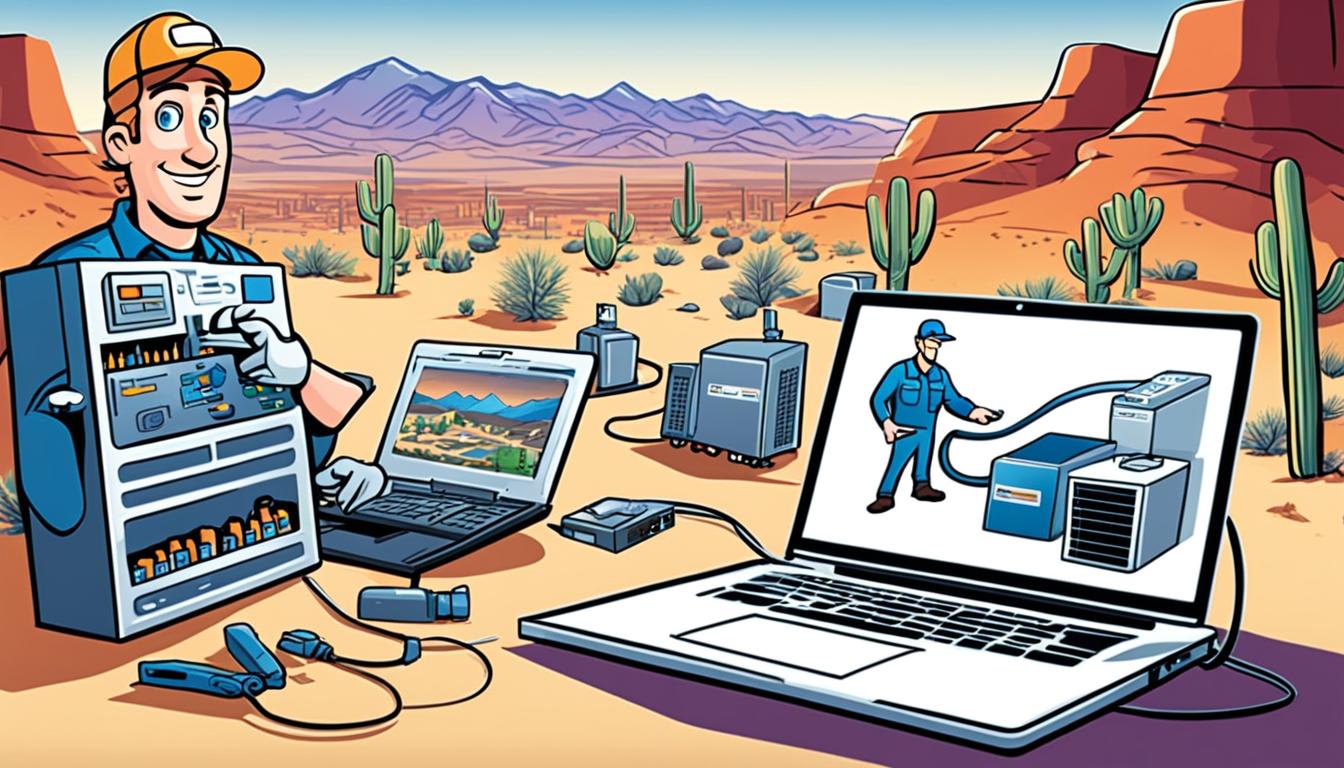Understanding how to price vent cleaning services competitively is essential for HVAC contractors to ensure profitability in their business. To attract customers and optimize costs, contractors need to implement effective pricing strategies and consider various factors in their pricing models.
There are two main pricing models used in the industry: hourly rate pricing and flat-rate pricing. The hourly rate model bills customers based on the time and materials required for the job, providing transparency to customers. On the other hand, flat-rate pricing sets a predetermined price for the entire job, offering peace of mind to customers with a fixed cost upfront. Both models have their advantages and disadvantages.
Pricing accurately involves considering factors such as labor costs, material costs, unbillable hours, overhead expenses, and local competition rates. By evaluating these factors and implementing the right pricing strategies, contractors can attract customers with competitive pricing while optimizing costs for their business.
Key Takeaways:
- Understand the two main pricing models: hourly rate pricing and flat-rate pricing.
- Consider factors such as labor costs, material costs, unbillable hours, overhead expenses, and local competition rates.
- Implement effective pricing strategies to attract customers and optimize costs.
- Evaluate the advantages and disadvantages of each pricing model.
- Offer transparent pricing and peace of mind to customers with the chosen pricing strategy.
Hourly Rate (Time + Materials) Pricing
When pricing your vent cleaning services, the hourly rate (time + materials) pricing model can offer transparency and flexibility. With this model, your customers will appreciate the itemized estimate that clearly shows the hourly rate and material costs involved.
Advantages of Hourly Rate Pricing:
- Transparency: The itemized estimate provides transparency, allowing customers to see exactly what they are paying for.
- Flexibility: Hourly rate pricing allows you to adjust the cost based on the complexity or specific needs of each vent cleaning job.
- Accurate billing: By tracking the actual hours spent on the job, you ensure that customers pay for the time and effort invested in their project.
Disadvantages of Hourly Rate Pricing:
- Pressure on technicians: With hourly rate pricing, customers may closely scrutinize the hours worked, potentially putting pressure on your technicians to work quickly. This can lead to rushed work and potential mistakes.
- Unbillable hours: Creating estimates and invoices for each project can take time, resulting in more unbillable hours. It’s important to consider this when determining your pricing structure.
Consider these factors before implementing the hourly rate pricing model in your vent cleaning business. It can provide transparency and flexibility, but it’s crucial to find the right balance to ensure both customer satisfaction and profitability.
| Advantages of Hourly Rate Pricing | Disadvantages of Hourly Rate Pricing |
|---|---|
| Transparency: Customers can see the itemized estimate, which builds trust and transparency in the pricing process. | Pressure on Technicians: Customers may closely scrutinize the hours worked, putting pressure on technicians to work quickly. |
| Flexibility: Hourly rate pricing allows for adjustments based on the complexity or specific requirements of the job. | Unbillable Hours: Creating estimates and invoices for each project can result in more unbillable hours. |
| Accurate Billing: By tracking the actual hours spent, you ensure accurate billing for customers. |
Flat-Rate Pricing

The flat-rate pricing model for vent cleaning services is a popular and effective approach. With this model, contractors set a fixed price for the entire job, providing customers with peace of mind and eliminating any uncertainty about the final cost. This pricing strategy offers several advantages and can contribute to improved profitability for HVAC contractors.
Advantages of Flat-Rate Pricing
Implementing flat-rate pricing brings several benefits to both contractors and customers:
- Transparent and predictable cost: Customers appreciate the upfront pricing, knowing the exact cost of the service without any surprises. This transparency builds trust and helps in customer satisfaction.
- Increase in potential revenue: Flat-rate pricing allows contractors to offer a menu of add-on and upgrade services. This provides an opportunity to upsell additional services, ultimately increasing the revenue from each job.
- Time and cost savings: With flat-rate pricing, contractors do not need to create new estimates and invoices for every project. This saves valuable time and reduces unbillable admin hours, streamlining business operations.
- Peace of mind for customers: Knowing the final cost upfront provides customers with peace of mind as they can plan and budget accordingly. There are no hidden charges or unexpected expenses.
Disadvantages of Flat-Rate Pricing
While flat-rate pricing offers numerous advantages, it is essential to consider the potential drawbacks:
- Evaluation accuracy: Contractors must accurately assess the problem upfront to set an appropriate flat rate. Failure to properly evaluate the scope of work may result in working longer hours without proper compensation.
Case Study: Improved Profitability with Flat-Rate Pricing
| Metrics | Before Flat-Rate Pricing | After Flat-Rate Pricing |
|---|---|---|
| Annual Revenue | $200,000 | $250,000 |
| Profit Margin | 15% | 20% |
| Customer Satisfaction | 80% | 95% |
A case study conducted on a vent cleaning company shows the positive impact of implementing flat-rate pricing. By adopting this pricing model, the company experienced a 25% increase in annual revenue, improved profit margins, and significantly higher customer satisfaction rates. This demonstrates the potential for improved profitability that flat-rate pricing can bring to HVAC businesses.
Overall, flat-rate pricing offers numerous advantages for both contractors and customers. It provides transparency, increases revenue potential, and saves time and administrative costs. However, accurate evaluation of the problem upfront is crucial to avoid potential financial pitfalls. By implementing flat-rate pricing effectively, HVAC contractors can enhance their profitability while providing peace of mind to customers.
Strategies for Pricing Vent Cleaning Services Competitively
When it comes to pricing vent cleaning services, implementing effective strategies can give you a competitive edge in the HVAC industry. To start, conducting thorough market research is crucial. Take the time to evaluate the pricing landscape in your local area, considering factors such as labor costs, material costs, and overhead expenses. This will help you determine the most competitive pricing for your services.
In addition to market research, evaluating and managing your overhead costs is essential. Understanding your business expenses and finding ways to optimize them can contribute to better profitability. By streamlining your operational costs, you can offer competitive prices without compromising your bottom line.
Another strategy to consider is offering additional services. By expanding your service offerings to include mold remediation or air purification, you can attract more customers and generate additional income. This diversification allows you to stand out from competitors and provide a comprehensive solution for your clients.
Lastly, building strong customer relationships is key to setting competitive prices. By delivering exceptional service and prioritizing customer satisfaction, you can cultivate loyalty and long-term partnerships. Consider forming alliances with property management companies or landlords to secure ongoing business. These relationships not only contribute to your credibility but also create a steady customer base that values your competitive pricing and reliable services.





0 Comments